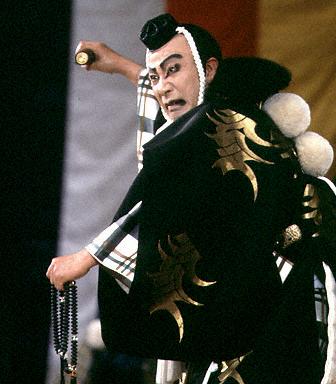| architecture |
| calligraphy |
| ceramics |
| clothing |
| comics |
| gardens |
| lacquerwork |
| literature |
| movies |
| music |
| painting |
| poetry |
| sculpture |
| tea ceremony |
| television |
| theatre |
| weaponry |
| thematic routes |
| timeline |
| the site |
context: theatre > kabuki

|
Style of Kabuki
Kabuki has always been rather closer to natural speech than Noh, though it is still highly stylised in all its elements. It was a popular more than aristocratic form, and tended towards heroic and violent stories (especially in Edo, the capital). There were two types of story: historical, meaning set before the Edo period, featuring warriors and aristocrats; and contemporary, featuring ordinary people and current events, but never warriors or aristocrats, as that was banned. The lines did get blurred on occasion, when an author might take recent upper class events and recast them to several centuries ago, fooling no one but avoiding the censorship.
One oddity is that plays are very rarely performed in full: a typical show would be a few scenes from one major play, or even popular scenes pulled from different plays. The audience is generally assumed to know the stories well enough to understand the scenes out of their full context.
